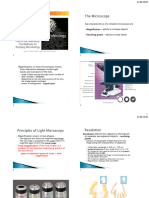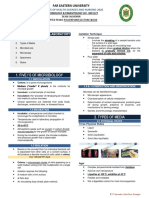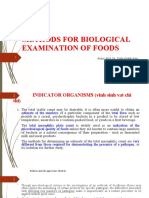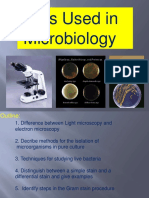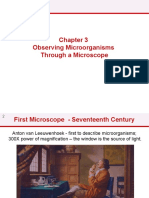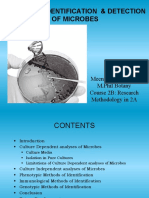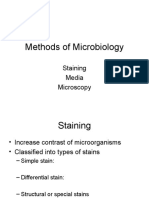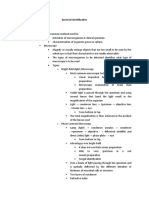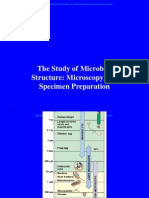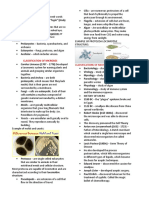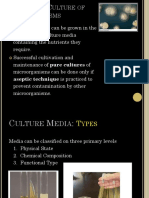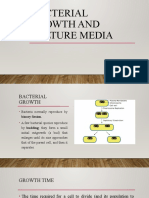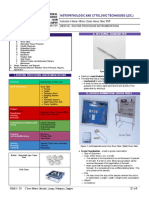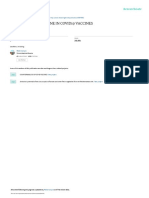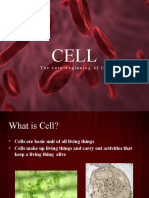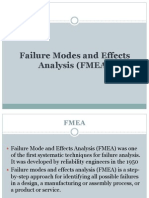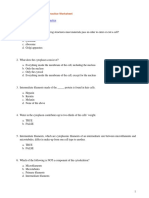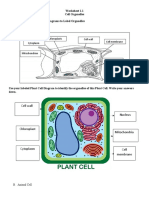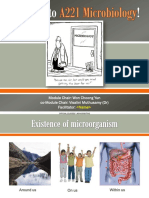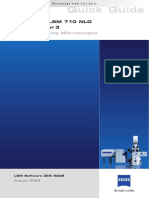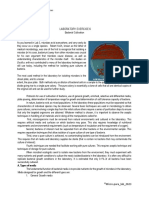0% found this document useful (0 votes)
34 views45 pagesChapter03 Lecture
The document discusses various types of media used for growing and studying microorganisms under the microscope. It describes liquid, solid and semisolid media and their uses. It also explains different types of specialized media like selective, differential, enriched and transport media and how they help isolate and identify specific microbes.
Uploaded by
Trần LinhCopyright
© © All Rights Reserved
We take content rights seriously. If you suspect this is your content, claim it here.
Available Formats
Download as PDF, TXT or read online on Scribd
0% found this document useful (0 votes)
34 views45 pagesChapter03 Lecture
The document discusses various types of media used for growing and studying microorganisms under the microscope. It describes liquid, solid and semisolid media and their uses. It also explains different types of specialized media like selective, differential, enriched and transport media and how they help isolate and identify specific microbes.
Uploaded by
Trần LinhCopyright
© © All Rights Reserved
We take content rights seriously. If you suspect this is your content, claim it here.
Available Formats
Download as PDF, TXT or read online on Scribd
/ 45

